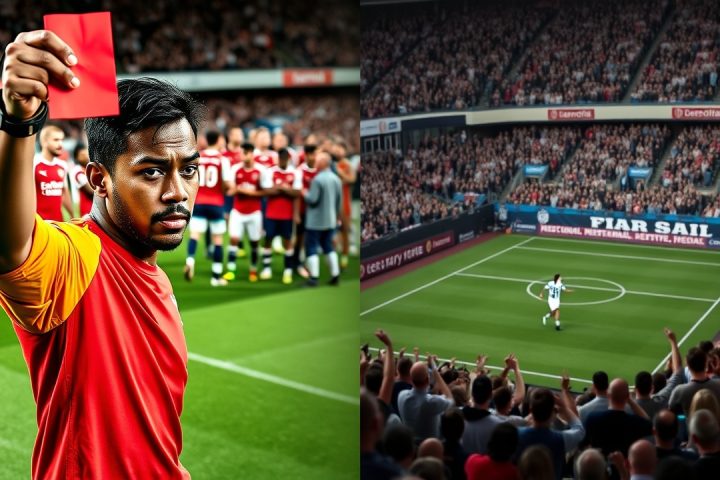Introduction
Upon entering the reception area of the Sports Technology Institute located at Loughborough University, visitors are met with a striking glass display housing various items from the world of sports, including an array of footballs, a cricket helmet, and even a piece of memorabilia from the London 2012 Olympics. Among the showcased items, 12 distinctive footballs represent each men’s European Championship and World Cup since 2002, meticulously arranged for instant recognition. These footballs underwent rigorous testing by the institute in collaboration with Adidas, focusing on aspects such as aerodynamics and performance dynamics, as detailed on accompanying plaques.
Recent Criticism from Football Managers
The occasion for these observations stems from recent criticisms by two prominent football managers: Mikel Arteta and Pep Guardiola. Following a match in January, Arteta remarked on the peculiar behavior of the Puma Carabao Cup ball, highlighting how it diverged in flight and grip from standard Premier League balls. In Arsenal’s match against Newcastle, ten of their 23 attempts missed the target, prompting Arteta to comment,
“It’s tricky that these balls fly a lot.”
On the other hand, Guardiola, after Manchester City’s FA Cup victory over Plymouth Argyle, declared the FA Cup ball inadequate compared to its Premier League counterpart.
“It’s difficult to control. When you lose it, it may sound like complaining, but it’s simply the truth,”
he noted regarding the inconsistencies witnessed in matches played with these balls.
Experimental Analysis at the Institute
To investigate these disparities, a modest test—dubbed “light touch testing”—commenced, utilizing a selection of match-replica balls valued at over £100 each. Researcher Ieuan Williams, fresh from a PhD focusing on football dynamics, demonstrated the institute’s expertise in performance evaluation by referencing a task completed for Adidas involving extensive kick trials using a robotic system designed for precision.
Testing commenced outside with a trio of Loughborough players tasked with shooting from 24 yards using different balls, including the Puma Carabao Cup, the Mitre FA Cup Ultimax Pro, and Nike’s upcoming Premier League Flight ball. This specific form of testing constitutes just a fraction of the institute’s typical research, as external conditions complicate factors and limit conclusive insights.
Robotic Technology and Historical Context
Professor Andy Harland, an associate dean at the institute, introduced the use of robotic technology for enhanced testing accuracy, acknowledging the variances in human performance. He indicated a continuous objective to correlate player perceptions with mechanized assessments. A high-speed camera setup performed slow-motion recordings of each kick, enabling detailed analysis of velocity and spin.
Through ongoing studies, Professor Harland discussed notable historical football statistics, such as Diego Forlan’s remarkable performance with the unpredictable Jabulani ball during the 2010 World Cup, attributing it to differing striking techniques affected by environmental conditions. He shared details about how FIFA mandates specific ball requirements, ensuring uniformity in size and weight through rigorous testing procedures.
Player Dynamics and Football Design Evolution
In observing player dynamics, one individual highlighted a need to alter their kicking technique after experimenting with different balls, while others were noted to apply varying spin rates significantly with specific models. Data collected from the kick tests revealed no statistically significant differences between the balls in terms of speed or launch angles, although minor clusters and variances were evident, indicating the necessity for larger sample sizes for concrete conclusions.
The conversation naturally turned toward the evolution of football design, from traditional panels to modern developments that have embraced fewer, yet innovative, constructions aligning with advancements in aerodynamics. Williams discussed the trajectory of design, noting how changes in construction materials and methodologies, such as thermal bonding, have revolutionized the football market.
Conclusion
As footballs continue to evolve, the challenges that accompany changing specifications highlight a central truth: players are faced with the task of adapting, as pointed out by Arteta amid his critiques. The ongoing competition between manufacturers ensures that feedback from the industry—including player opinions—remains invaluable, aligning the needs of professional athletes with the latest innovations in sport. The intersection of technological advancement and player perception presents an intriguing avenue for further research and understanding in the science of sports.




